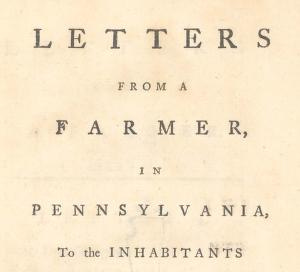Ideology, the American Revolution, and a Bunch of Pamphlets
A Review of Bernard Bailyn's "Ideological Origins of the American Revolution." (1967)
Bernard Bailyn, Ideological Origins of the American Revolution (Cambridge, MA: Harvard University Press, 1967), pgs. 416.

Bernard Bailyn’s work, Ideological Origins of the American Revolution (1967), was originally little more than an expanded preface to his work on the Pamphlets of the American Revolution (1965) has become a classic, inspiring both admiration and intense hatred among scholars. Bailyn, a professor of History at Harvard University, landed himself with this work as one of the great historians of the American Revolution.
Ideological Origins is one of those books in the American historical lexicon that is read, even if scholars vehemently disagree with its premises and ideas, in graduate seminars across the United States. Ultimately, Bailyn’s emphasis that republican ideology, found in the pamphlets that he had prepared for his primary source publication, show the real reason that Americans rebelled is crucial to the support and vitriol that he has since received.
Bailyn argues that it is in the pamphlets before and during the American Revolution that the meaning, driving motivators, and deep paranoia of the American patriots is best expressed. Thus American Whig ideology, a paranoid, conspiracy laden, reactionary, and half-baked world of ideas drawn from Greek, Roman, and English thought, was the core of what drove Americans to take up arms against Great Britain in 1775.1
Bailyn begins his work emphasizing the role of pamphlets and how, despite the amateurness of American pamphleteers when compared with their English counterparts, their work had an impact on the world around them in driving the reading American public towards Revolution. It was because of their amateurness, many writing not for literary acclaim but to demonstrate the intellectual force of their arguments, that scholars can use these pamphlets as the source for understanding American ideology. It was in the 1760s, following the great British victory over France in the Seven Years War that Americans began to paranoidly fear that a corrupt British government was attempting to undercut and destroy British Americans’ English liberties.
For British American pamphleteers (and their readers who Bailyn argues are most of the population of colonial America) in all societies there was a constant war between power and liberty. In order for the governed to preserve their liberty (a blend of “English rights” and natural rights seen by the pamphleteers as given by God), the people needed to be constantly vigilant against the encroachment of tyranny. American writers insisted that checks and balances (i.e. a mixed constitution) were essential to preserving liberty. Americans saw themselves as freer and purer in their attachment to these liberties, an idea that only strengthened as a series of British efforts from 1764 to 1774 seemed to confirm that a conspiracy among the heads ofParliament sought to overthrow all Britons (not just Americans) liberties. Corruption and conspiracy (even though Bailyn argues that these were entirely illogical) were at the core of why Americans rebelled and eventually sought independence.
Bailyn ends by projecting his ideas past the American Revolution and argues that it was the antifederalists who truly remembered the spirit of 1776 as they fought tooth and nail against what they saw as a conspiracy in Philadelphia. The debates and constitution making following the American Revolution are to Bailyn evidence how Americans began reconceiving “fundamentals of government and society’s relation to government.” In a post script, Bailyn further argues that the Constitution was a “final and climatic expression of the ideology of the American Revolution.” It was through the Founders reinterpretation of old ideas and reframing them to support the new government that the ideas and paranoia of the Revolution were imbedded into the United States governmental fabric.
Critics of Bailyn argue that his overemphasis on the pamphlets and ideology obscures other powerful driving forces in the American Revolution. In many ways they are right. Bailyn pays little attention to anything but pamphlets, neglecting the myriad of other ways that human beings in the American Revolution communicated with each other. Furthermore, his emphasis on “paranoia” downplays some of the real threats of an expanding and hardening British Imperial state. Finally, though he points at times to it, there is an utter lack of religious discussion, despite the fact that the majority of American publishing was imbedded in a deeply Christian world view (a fact seen in the pamphlets that Bailyn analyzed). Finally, Bailyn compresses regional differences, emphasizing a unique “Americanness” that I do not believe was not yet formed even as the protests against Britain raged.
While there are countless flaws in this classic work, the rejection that ideas of republicanism played a role among the “vulgar” reading population (the popular culture of the British American colonies) seems rather fallacious. Writers such as Rob Parkinson (The Common Cause) commit the same errors that Bailyn did in overemphasizing a single explanation for the outbreak and growth of the American Revolution. Rather than a single explanation, I find that Bailyn’s narrative provides a small way of looking at how the American Revolution could break out among a people that in 1763 were proud to be Britons and were eager to share in the rewards of empire.
Rob Swanson
Feel free to leave a comment or ask further questions!
Mary E. Triece, “Ideology in Marxist Traditions,” in Oxford Research Encyclopedia of Communication (Jul. 30, 2018). Bailyn draws on the Marxist conception of ideology in which ideology is a set of ideas which distort and mystify the process of capitalist exploitation.



